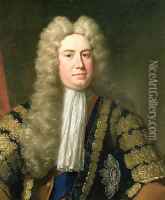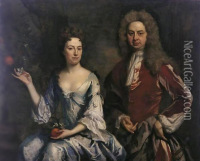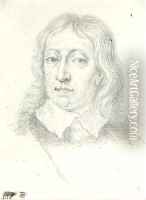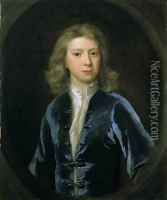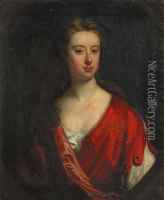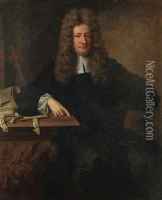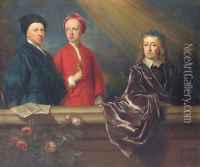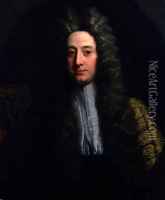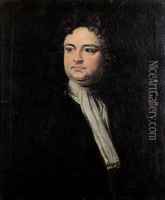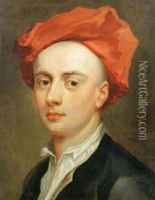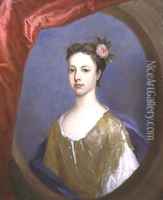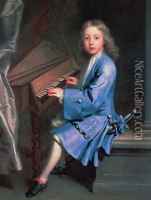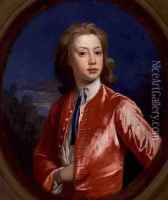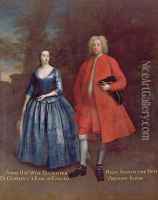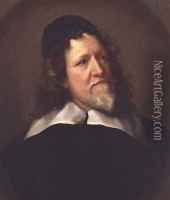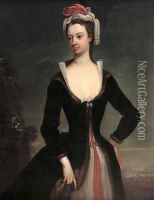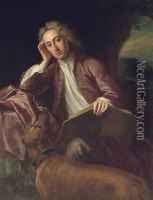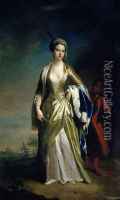Jonathan Richardson Paintings
Jonathan Richardson, often known as 'the Elder' to distinguish him from his son Jonathan Richardson the Younger, was a notable English portrait painter, art theorist, and writer. Born in 1667, he became one of the leading portrait painters in London during the late 17th and early 18th centuries. Richardson received his training from the painter John Riley and, upon Riley’s death, inherited a large portion of his practice. He quickly established himself as a successful portrait artist among the English gentry and nobility.
Richardson's painting style was heavily influenced by the works of Sir Anthony van Dyck and Sir Peter Lely. He painted in a relatively conservative manner, which appealed to his clients' tastes at the time. His work is characterized by a strong sense of character and a focus on the sitter's face, often set against a muted background. Beyond his artistic practice, Richardson amassed a significant collection of drawings and prints and was highly respected for his connoisseurship.
In addition to his painting career, Richardson is equally remembered for his contributions to art theory and criticism. He authored several influential books, including 'An Essay on the Theory of Painting' (1715) and 'An Essay on the Whole Art of Criticism as it Relates to Painting' (1719). His writings helped to formulate the theoretical foundation for the Grand Manner style of painting that would dominate English portraiture later in the 18th century.
Richardson also played a pivotal role in shaping the early career of Thomas Hudson and was the master of George Knapton, both of whom became prominent portraitists. His legacy extends to his son, Jonathan Richardson the Younger, who was also an artist and writer, although the elder Richardson's impact on the art world was more profound.
Jonathan Richardson the Elder died in 1745, leaving behind a body of work that represents a significant period in British art history. His theoretical writings continued to influence artists and thinkers long after his death, and his portraits remain a testament to his skill in capturing the personalities of his sitters.
